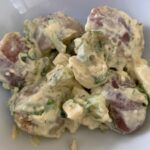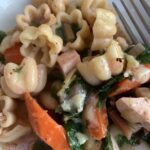Incorporating fresh herbs into your culinary repertoire is essential for elevating your dishes from ordinary to extraordinary. Whether it’s the robust flavor of garlic or the aromatic notes of oregano, thyme, or rosemary, these culinary staples add depth and complexity to your meals. From homemade guacamole enhanced with fresh cilantro you purchased to dining out at local restaurants adorned with chopped herbs, the presence of fresh herbs not only enhances the visual appeal but also imparts a burst of flavor that tantalizes the taste buds. Discover how integrating fresh herbs can transform your cooking experience, elevating both presentation and taste.
Why grow your own herbs?
The price and condition of fresh herbs packaged in those small plastic containers at the grocery store usually brings disappointment as the thin, fragile leaves of many herbs tend to turn brown or slimy very quickly. What do you do with the rest of the bunch of fresh parsley you purchased when the recipes call for only 1 tablespoon? Dried herbs are easily found in grocery stores, but if compared to the fresh herb, they will seem a little more than mild and musty. Compare a spoonful of dried basil with a bunch of fresh Genovese basil just picked from the garden. The dried flakes are lifeless, but the complex layering of mint, clove, anise, and cinnamon scents that waft from the fresh sprigs are so enticing you’ll want to find more dishes to include them in. Are you ready to embark on growing fresh herbs of your own?
Growing your own herbs is simple-really! Whether you have a few pots of herbs on a tiny balcony or an elaborate kitchen garden, growing and cooking with fresh herbs brings incomparable vibrancy to the food you make. Herbs are easy to grow—they’re undemanding and practically take care of themselves. If you love to cook and have any sort of sunny outdoor space—balcony, deck, or yard—there is no reason not to plant at least a few. And, for me, there’s the satisfaction of knowing I raised that delightful herb myself!
Here are the top 5 most used and easiest to grow culinary herbs:





- Parsley
- Chives
- Thyme
- Oregano
- Basil
The most common culinary herbs can be divided into two groups: Tender Herbs and Hardy Herbs
- Tender Herbs are leafier that include mint, parsley, cilantro, basil, tarragon, dill, chives. They can be cooked into dishes but are especially delicious raw.
- Hardy Herbs are woodier herbs that include sage, rosemary, thyme, and oregano. These herbs are likely to be cooked into dishes than eaten raw. Remove the leaves from the stems and chop finely or leave in whole sprigs for easier removal from your dish when finished cooking.
HARVESTING FRESH HERBS
Snip off the herbs with small, sharp scissors, taking only as much as you need for your recipe. At the end of the growing season, you can harvest all of the growing stems. See ‘Preserving Summer’s Bounty‘ article for details.
STORING FRESH HERBS
- Herbs need a bit of extra protection but also some access to air. A good way to achieve this is to loosely wrap in a tea towel or a paper towel and place in a breathable bag in the crisper drawer
- Basil is an exception, which browns quickly in the cold of the refrigerator. Keep basil with trimmed stems in a glass of water on the counter away from the sun.
- Store parsley and cilantro in a glass with an inch or two of water in the bottom in the refrigerator. A plastic bag loosely covering the leaves will help keep them fresher from the dry environment of the refrigerator.

A VERY BASIC LIST OF HERB ‘PAIRINGS’
BASIL: tomatoes, chicken, fish
CHIVES: zucchini, tomatoes, carrots
CILANTRO : tomatoes, carrots, lettuce
DILL : tomatoes, broccoli, cucumber, corn, celery, fish
OREGANO: All vegetables, pork, beef, chicken
PARSLEY: Asparagus, carrots, tomatoes, pork, chicken
SAGE: Broccoli, carrots, peas, tomatoes, chicken, turkey, pork, beef, fish
THYME: Tomatoes, lettuce, celery, sweet corn, chicken, beef, fish
MEASURING FRESH HERBS
To measure whole herbs, remove the stems, chop the leaves, then scoop the chopped leaves into the measuring spoon or cup and level the top. If you are measuring whole leaves or very coarsely chopped herbs press them down gently. Because the strength of any particular herb varies, a little more or a little less will rarely hurt. If there is a pinch left on the cutting board after you measure, add it as well; if you end up with a fraction shy of the two tablespoons called for, just leave it at that.












